Select Language
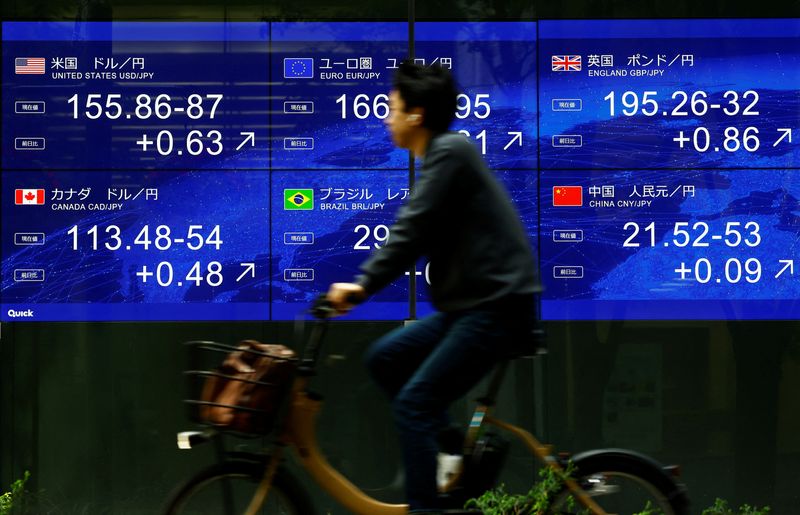
By Wayne Cole
SYDNEY (Reuters) - Asian shares edged lower on Monday as high Treasury yields challenged lofty Wall Street equity valuations while underpinning the U.S. dollar near multi-month peaks.
Volumes were light with the New Year holiday looming and a rather bare data diary this week. China has the PMI factory surveys out on Tuesday, while the U.S. ISM survey for December is due on Friday.
MSCI's broadest index of Asia-Pacific shares outside Japan dipped 0.2%, but is still 16% higher for the year. Japan's Nikkei eased 0.2%, but is sitting on gains of 20% for 2024.
South Korea's main index has not been so fortunate, having run into a storm of political uncertainty in recent weeks, and is saddled with losses of more than 9% for the year. It was last off 0.35%.
S&P 500 futures and Nasdaq futures were both off 0.1%. Wall Street suffered a broad-based sell off on Friday with no obvious trigger, though volumes were just two-thirds of the daily average. .[.N]
The S&P 500 is still up 25% for the year and the Nasdaq 31%, which is stretching valuations when compared to the risk-free return of Treasuries. Investors are counting on earnings per share growth of just over 10% in 2025, versus a 12.47% expected rise in 2024, according to LSEG data.
Yet yields on 10-year Treasuries are near eight-month highs at 4.631% and ending the year around 75 basis points above where they started it, even though the Fed delivered 100 basis points of cuts to cash rates.
"The continued rise in bond yields, driven by the reassessment of less restrictive monetary policy expectations, creates some concern," said Quasar Elizundia, a research strategist at broker Pepperstone.
"The possibility that the Fed may keep restrictive monetary policy for longer than expected could temper corporate earnings growth expectations for 2025, which could in turn influence investment decisions."
Bond investors may also be wary of burgeoning supply as President-elect Donald Trump is promising tax cuts with few concrete proposals for restraining the budget deficit.
Trump is expected to release at least 25 executive orders when he takes office on Jan. 20, covering a range of issues from immigration to energy and crypto policy.
Widening interest rate differentials have kept the U.S. dollar in demand, giving it gains of 6.5% for the year on a basket of major currencies.
The euro has lost more than 5% on the dollar so far in 2024 to last stand at $1.0429, not far from its recent two-year trough of $1.0344.
The dollar held near a five-month top on the yen at 157.71, with only the risk of Japanese intervention preventing another test of the 160.00 barrier.
The strength of the dollar has been something of a burden for gold prices, though the metal is still 28% higher for the year so far at $2,624 an ounce. [GOL/]
Oil has had a tougher year as concerns about demand, particularly from China, kept a lid on prices and forced OPEC+ to repeatedly extend a deal to limit supplies. [O/R]
Brent fell 37 cents to $73.80 a barrel, while U.S. crude lost 17 cents to $70.43 per barrel.
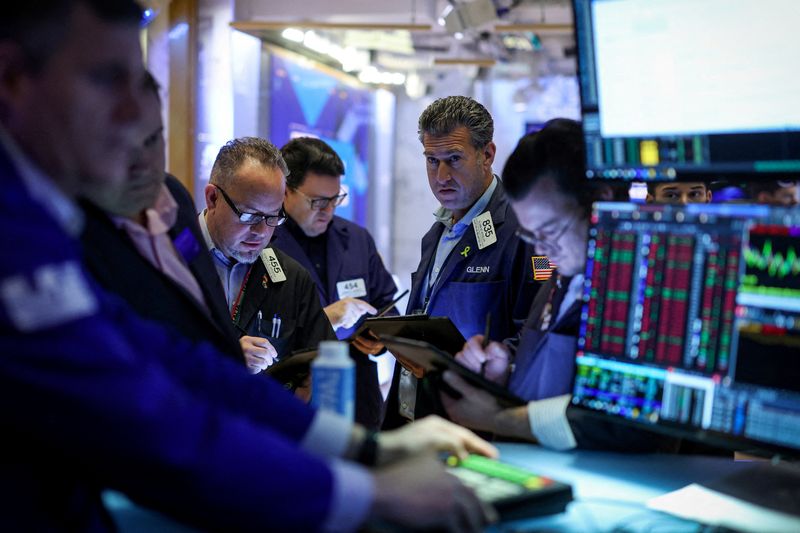
By Laura Matthews
NEW YORK (Reuters) -After closing the books on a banner year for U.S. stocks, investors expect to ride seasonal momentum into mid-January when a slew of economic data and a transition of power in Washington could send markets moving.
The S&P 500 rose roughly 25% in 2024 through Dec. 27, while the technology-heavy Nasdaq Composite index (IXIC), which surpassed 20,000 for the first time in December, is up over 31%.
On Friday, however, stocks sold off amid some profit taking and questions about how markets could perform in January, according to analysts and traders.
"There are concerns that maybe the first part of (next) year can involve some repositioning and reallocation of funds and those that are trading today and next week are probably just trying to get a little bit ahead of that," said Robert Pavlik, senior portfolio manager at Dakota Wealth.
Stocks tend to do well in the last five trading days of December and into the first two days of January, a phenomenon dubbed the Santa Claus rally, which has driven S&P gains of an average of 1.3% since 1969, according to the Stock Trader's Almanac.
Despite the Friday selloff, for the last five trading sessions, the S&P rose 1.77%, while the Nasdaq was up 1.8%.
Just how long upward momentum lasts will depend on several forces that could help drive markets in 2025.
Monthly U.S. employment data on Jan. 10 should give investors a fresh view into the health and strength of the U.S. economy. Job growth rebounded in November following hurricane- and strike-related setbacks earlier in the year.
The market's strength will be tested again shortly after, when U.S. companies start reporting fourth-quarter earnings.
Investors anticipate a 10.33% earnings per share growth in 2025, versus a 12.47% expected rise in 2024, according to LSEG data, although excitement over President-elect Donald Trump's policies is expected to boost the outlook for some sectors like banks, energy and crypto.
"There's the hope that taxes and regulations will be lowered or reduced next year, that will help support corporate profits, which are what drive the market in the first place," said Michael Rosen, chief investment officer at Angeles Investments.
Trump's inauguration on Jan. 20 could also throw the markets some curve balls. He is expected to release at least 25 executive orders in his first day on a range of issues from immigration to energy and crypto policy.
Trump has also threatened tariffs on goods from China and levies on products from both Mexico and Canada, as well as to crack down on immigration, creating costs that companies could ultimately pass on to consumers.
Helen Given, associate director of trading at Monex USA, said a new administration always brings with it a large degree of uncertainty. There is also a good chance the impact of the Trump administration's expected trade policies is far from fully priced into global currency markets, she added.
"We're looking ahead to see which of those proposed policies actually are enacted, which might be further down the pipeline," Given said, adding she expected a big impact on the euro, Mexican peso, the Canadian dollar, and the Chinese yuan.
The conclusion of the Federal Reserve's first monetary policy meeting of the year in late January could also present a challenge to the U.S. stocks rally.
Stocks tumbled on Dec. 18 when the Fed implemented its third interest-rate cut for the year and signaled fewer cuts in 2025 because of an uncertain inflation outlook, disappointing investors who had expected lower rates to boost corporate profits and valuations.
Still, that could be good for alternative assets like cryptocurrencies. The incoming crypto-friendly Trump administration is adding to a number of catalysts that are boosting crypto investors' confidence, said Damon Polistina, head of research at investment platform Eaglebrook Advisors.
Bitcoin surged above $107,000 this month on hopes of friendlier Trump policies.
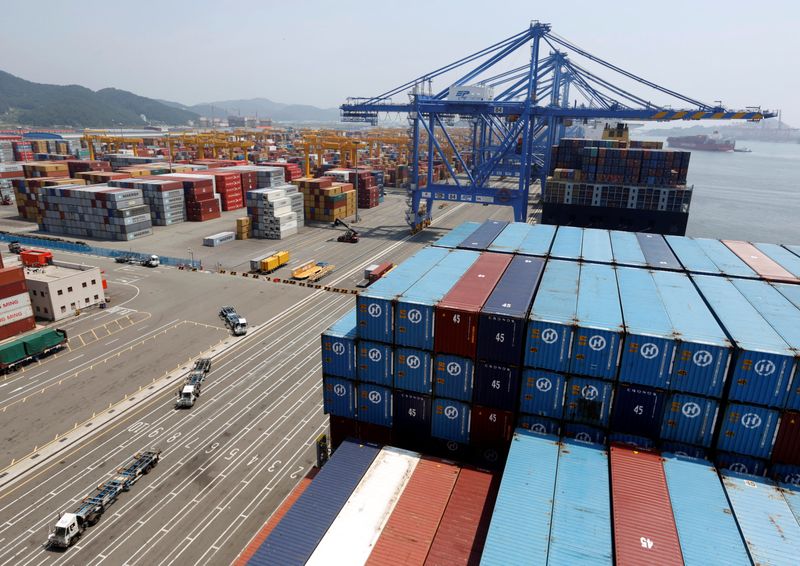
By Jihoon Lee and Cynthia Kim
SEOUL (Reuters) - South Korea's export growth is expected to have risen in December for a 15th straight month, but analysts feel momentum could moderate in the year ahead as concerns about possible U.S. tariffs heat up, a Reuters poll showed on Friday.
Outbound shipments from Asia's fourth largest economy are forecast to have risen 4.0% in December from a year earlier, after a gain of 1.4% in November, the median finding in a survey of 10 economists.
That would be the 15th successive month of annual export growth but analysts see the rate slowing in the coming year as demand for South Korean goods is expected to weaken, except for semiconductors, analysts said.
"Trade policy uncertainties heightened since Donald Trump was elected in the United States continue to pose risks for exporters," said Ha Keon-hyeong, an analyst at Shinhan Securities.
"It's part of the reason why some manufacturers are cutting down on production."
The U.S. president-elect has pledged to impose big tariffs on imports from major trading partners including China, South Korea's biggest trading partner.
The first major exporting economy to report trade figures each month, South Korea is set to issue December monthly data on January 1 at 9 a.m. (0000 GMT).
"Car production in December was hit by labor union strikes and export momentum in general is weakening, except for chips and information technology products," said Stephen Lee, chief economist at Meritz Securities Research Center.
The survey also forecast imports to have risen 4.6% in December, after November's fall of 2.4%.
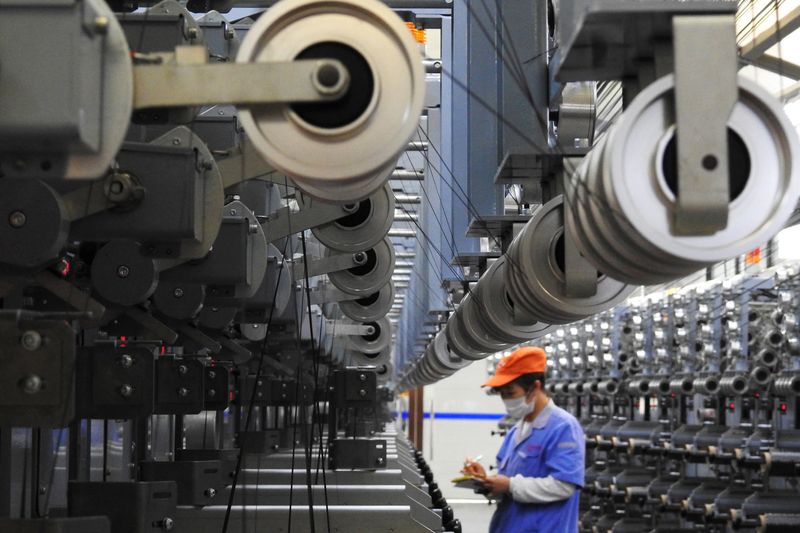
BEIJING (Reuters) -China's industrial profits fell at a slower clip in November, official data showed on Friday, but the annual decline in earnings this year is expected to be the worst in over two decades due to persistently soft domestic consumption.
The world's second-largest economy has been struggling to mount a strong post-pandemic revival, as business and household appetites for spending and investment remain subdued amid a prolonged housing downturn and fresh trade risks from the incoming U.S. administration of President-elect Donald Trump.
Industrial profits fell 7.3% in November from the same month last year, following a 10% drop in October, National Bureau of Statistics (NBS) data showed.
The narrower decline in November pointed to improved profits as recent economic stimulus measures start to have an effect, said Zhou Maohua, a macroeconomic researcher at China Everbright (OTC:CHFFF) Bank.
The profit numbers were also in line with a slower decline in factory-gate prices in November. The producer price index fell 2.5% year-on-year versus the 2.9% drop in October.
The World Bank on Thursday revised up its 2024 economic growth forecast for China slightly to 4.9% from its June forecast of 4.8%.
Still, in the first 11 months of 2024, industrial profits declined 4.7%, deepening a 4.3% slide in the January-October period, reflecting still tepid private demand in the Chinese economy.
China's full-year industrial profits are set to show their biggest drop in percentage terms since 2011. However, when smaller companies are included under a previous compilation methodology, this year's profit decline is expected to the worst since at least 2000.
A spate of economic indicators released this month pointed to mixed results, with industrial output accelerating in November while new home prices fell at the slowest pace in 17 months.
The industrial sector is undergoing an uneven recovery amid insufficient demand, Zhou said, pointing to difficulties facing real estate and some related industries as evidence of this malaise.
China's leaders vowed in a key policy meeting this month to raise the deficit, issue more debt and loosen monetary policy to maintain a stable economic growth rate. The government also recently pledged to step up direct fiscal support to consumers and boosting social security.
Beijing has agreed to issue a record $411 billion special treasury bonds next year, Reuters reported.
Profits at state-owned firms fell 8.4% in the first 11 months, foreign firms posted a 0.8% decline and private-sector companies recorded a 1% fall, according to a breakdown of the NBS data.
Industrial profit numbers cover firms with annual revenues of at least 20 million yuan ($2.7 million) from their main operations.
($1 = 7.2988 Chinese yuan renminbi)

Investing.com -- The UK is set to outperform its European counterparts over the next 15 years, maintaining its position as the world’s sixth-largest economy by 2039, according to the Centre for Economics and Business Research.
Britain will hold its lead over France, which is projected to remain in seventh place, while Germany, Italy, and Spain are expected to slip down the global rankings. The UK is forecast to narrow the economic gap with Germany, which will be 20% larger than Britain’s economy in 2039, compared to the current 31%.
“While this outlook is markedly better than key European peers like France and Germany, both of whom are expected to slip, this reflects a relatively poorer outlook for Eurozone economies rather than strong UK growth,” CEBR said.
The report comes as Prime Minister Keir Starmer faces economic challenges during Labour’s early months in government. Official data show no economic growth since Labour took power in July, with survey indicators pointing to a weak end to 2024 and further strain into 2025.
Starmer’s plans to drive faster growth through planning reforms, housing initiatives, and public investment aim to reinvigorate the economy. However, CEBR warns that recent tax hikes could weigh on short-term activity. Over the longer term, it expects Britain’s trend growth rate to stabilize at 1.8%.
Globally, the United States is projected to retain its position as the largest economy, fending off competition from China.
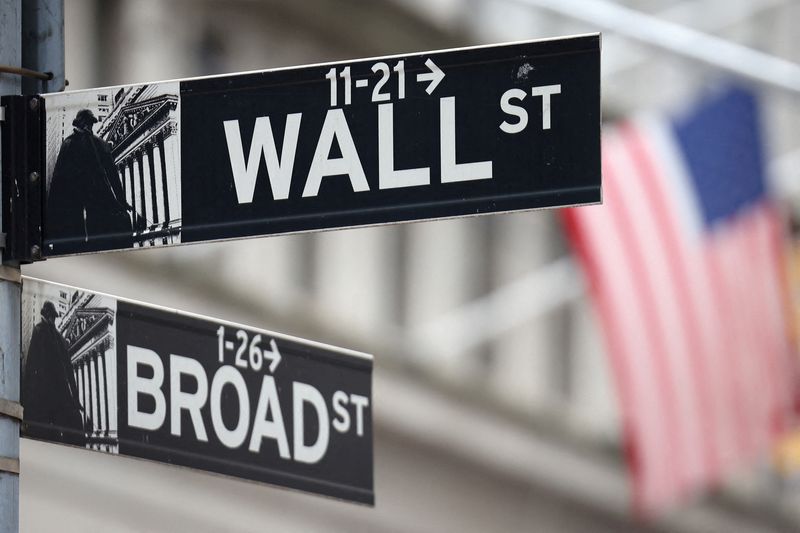
By David French
(Reuters) -The Dow Jones Industrial Average closed fractionally higher on Thursday, stretching its winning streak to five sessions despite light trading volumes and rising U.S. Treasury yields weighing on some of the dominant technology megacaps.
While the Nasdaq Composite and the S&P 500 were broadly unchanged, the indexes both finished slightly in negative territory. This snapped the Nasdaq's four-session run of higher closes, and ended the S&P 500's own run at three sessions.
On a day of few catalysts, investors responded to yields on U.S. government bonds inching higher, including the yield on the benchmark 10-year Treasury note hitting its highest since early May at 4.64% earlier in the session.
A strong auction of seven-year notes early in the afternoon though helped yields come off slightly, with the 10-year note at 4.58% in late-afternoon trade.
Higher yields are traditionally seen as negative for growth stocks, as it raises the cost of their borrowing to fund expansion. With markets increasingly dominated by the megacap technology stocks known as the Magnificent Seven, crimping their performance - especially in lieu of other market catalysts - will put downward pressure on benchmark indexes.
The S&P 500 slipped 2.45 points, or 0.04%, to 6,037.59 points, while the Nasdaq Composite lost 10.77 points, or 0.05%, to 20,020.36. The Dow Jones Industrial Average rose 28.77 points, or 0.07%, to 43,325.80.
Six of the megacaps fell, with Tesla (NASDAQ:TSLA) leading decliners with a 1.8% fall. The outlier was Apple (NASDAQ:AAPL), rising 0.3% and continuing to edge closer to becoming the first company in the world to hit a market value of $4 trillion.
The megacap tech stocks came off somewhat in the summer, as investors sought to rotate some capital into other sectors offering more value. Since the U.S. elections in November though, they have resumed their drive upwards and have outperformed the equal-weighted version of the S&P 500, said Adam Turnquist, chief technical strategist for LPL Financial (NASDAQ:LPLA).
"As a technician, what you want to see is breakouts in absolute terms and relative terms and the Mag 7 is checking the boxes there, so very constructive leadership going into the year-end," he said.
The three main indexes have hit multiple record highs this year on hopes of a lower interest rate environment and the prospects of artificial intelligence boosting corporate profits.
However, U.S. stocks have hit a speed bump in the final month of the year following an election-led rally in November as investors assess the Federal Reserve's projection of fewer interest rate cuts in 2025.
Looking ahead, LPL Financial's Turnquist said the last few weeks have seen significant reliance on the Magnificent Seven stocks driving markets higher, and we may be starting to see the cracks in this momentum. Therefore, to see further benchmark index increases, we will need to see input from other sectors of the economy.
One data release on Thursday showed the number of Americans filing new applications for jobless benefits dipped to the lowest in a month last week, consistent with a cooling but still healthy U.S. labor market.
Markets are in a seasonally strong period - called the "Santa Claus rally" - a pattern attributed to low liquidity, tax-loss harvesting and investing of year-end bonuses.
The S&P 500 has gained an average of 1.3% in the last five trading days of December and the first two days of January since 1969, according to the Stock Trader's Almanac.
Cryptocurrency-related stocks were down after Bitcoin declined 3.9%. MicroStrategy, MARA Holdings and Coinbase Global (NASDAQ:COIN) all fell between 1.9% and 4.8%.
Among the 11 S&P sectors which traded lower were consumer discretionary, off 0.6%, and the energy index, which slipped 0.1% as it tracked marginal weakness in U.S. crude prices. [O/R]
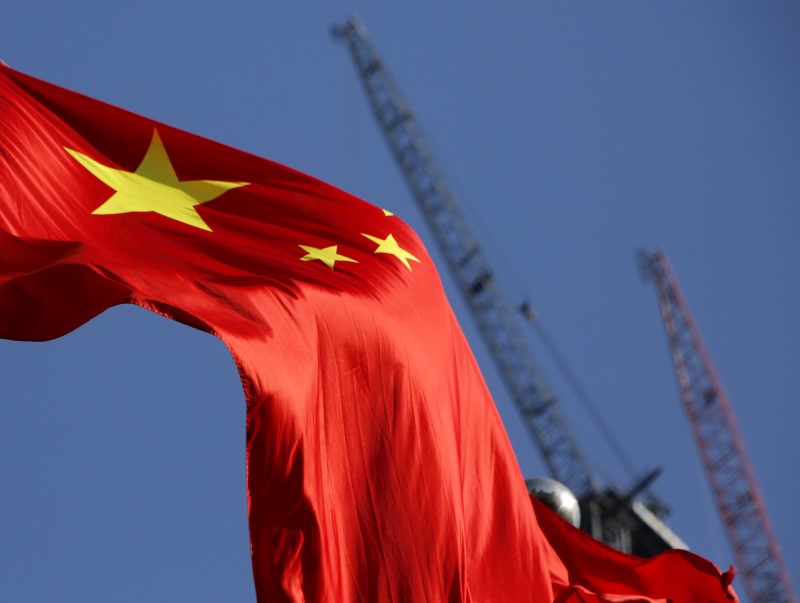
Investing.com -- The World Bank has raised its forecast for China's economic growth, projecting GDP expansion of 4.9% in 2024 and 4.5% in 2025.
The revisions, announced Thursday, reflect improved export strength and recent policy easing aimed at stabilizing the economy, including measures to support the property sector and consumer spending.
This marks a slight upward adjustment of 0.1 percentage points for 2024 and 0.4 percentage points for 2025 from the bank's previous estimates.
Despite the revised outlook, challenges persist, with the World Bank noting that weak household confidence, high local government debt, and a prolonged property downturn continue to weigh on economic activity.
"Addressing challenges in the property sector, strengthening social safety nets, and improving local government finances will be essential to unlocking a sustained recovery," Mara Warwick, the World Bank's country director for China.
China's property market, a traditional driver of growth, is unlikely to recover until late 2025, according to the bank.
Measures such as liquidity support for developers, reduced housing down payments, and state purchases of excess housing inventory have been introduced to mitigate the impact.
The bank highlighted that fiscal policy could provide an additional boost, especially if Beijing signals increased central government spending.
However, subdued domestic demand is expected to keep inflation low, with projections of 0.4% in 2024 rising to 1.1% in 2025.
"It is important to balance short-term support to growth with long-term structural reforms," Warwick emphasized, adding that clear policy communication is key to restoring confidence among consumers and markets.

Investing.com-- Most Asian currencies were lower on Thursday as the dollar remained steady near a two-year high, while the Indian rupee fell to an all-time low.
Most markets in the region were closed on Wednesday for Christmas.
The US Dollar Index was largely steady, while the US Dollar Index Futures ticked lower in Asian trade on Thursday.
Asian currencies weakened sharply last week after the Federal Reserve projected fewer rate cuts in 2025, citing concerns over sticky U.S. inflation.
Indian rupee hits record low, dollar remains near 2-yr high
The Indian rupee fell to an all-time low against the U.S. dollar, with the USD/INR pair hitting a record peak of 85.497 rupees with a 0.2% fall on Thursday. The pair had breached the 85 rupee mark last week.
The Chinese yuan’s onshore pair USD/CNY edged higher on Thursday. Chinese authorities have decided to issue a record-breaking 3 trillion yuan ($411 billion) in special treasury bonds next year, in an intensified fiscal effort to stimulate a struggling economy, Reuters reported on Tuesday.
The Singapore dollar’s USD/SGD pair rose 0.1%, while the Australian dollar’s AUD/USD pair fell 0.2%.
The South Korean won’s USD/KRW pair rose 0.4%, while the Philippine peso’s USD/PHP pair fell more than 1%, bucking the regional trend.
The U.S. dollar has shown notable strength in recent months, supported by a combination of domestic and global factors.
One key driver has been the Federal Reserve's monetary policy stance, which, despite earlier rate cuts, has shifted to maintaining higher interest rates for 2025 with projections of only two cuts.
Additionally, expectations of potential tariffs under the incoming Donald Trump administration have led to projections of higher inflation and robust economic performance, further boosting the dollar's appeal.
With expectations of the dollar remaining strong, the outlook for Asian currencies has become more clouded amid global uncertainties.
Japanese yen muted amid rate hike bets
The Japanese yen’s USD/JPY pair was largely unchanged on Thursday.
Japan's government is preparing a record $735 billion budget for the fiscal year starting in April, driven by rising social security and debt-servicing expenses, according to a draft obtained by Reuters.
BOJ Governor Kazuo Ueda said on Wednesday that the economy is expected to make progress toward sustainably reaching the central bank's 2% inflation target next year, hinting that an interest rate hike could be approaching.
The Bank of Japan ended negative interest rates in March and increased its short-term policy rate to 0.25% in July. It has indicated a willingness to raise rates further if wage and price trends align with its forecasts.
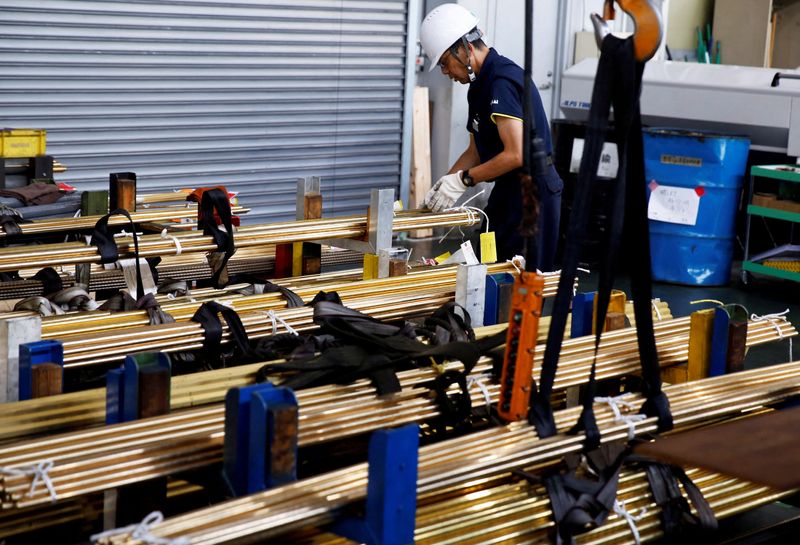
TOKYO (Reuters) - Japan's government said on Thursday it predicts economic output will recover to full capacity in the next fiscal year for the first time in seven years on an annual basis due to a tight labour market.
Japan's output gap, which measures the difference between an economy's actual and potential output, is likely to stand at +0.4% in the fiscal year starting in April, according to an estimate released by the Cabinet Office.
A positive output gap occurs when actual output exceeds the economy's full capacity, and it is considered a sign of strong demand.
With Japan's labour force at a plateau of about 69 million workers, labour shortages are likely to restrict supply, the Cabinet Office said.
Japan's output gap slipped into the negative territory in fiscal 2019, falling to as low as -4.5% in fiscal year 2020 during the pandemic.
It is among data the Bank of Japan watches closely in determining whether the economy is expanding strongly enough to propel a demand-driven rise in inflation.
The Cabinet Office expects growth in the overall consumer price index, which includes fresh food prices, to slow to 2% in the next fiscal year from 2.5% this year.
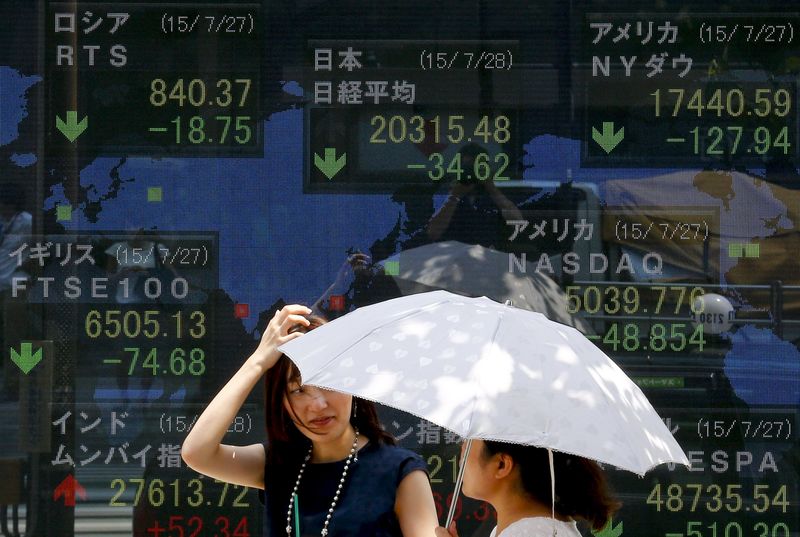
Investing.com-- Asian stocks were largely muted on Thursday as trading remained thin with major stock indexes shut for holidays, while Japanese shares climbed after a report showed Japan planning a record budget for the upcoming fiscal year.
Stock markets in Indonesia and Hong Kong were closed for Christmas, while Australia and New Zealand markets were shut on Thursday for the Boxing Day holiday.
U.S. stock index futures were largely steady in Asian trade on Thursday.
Asian markets were nursing losses in recent sessions after the Federal Reserve flagged a slower pace of interest rate cuts in 2025- a scenario that bodes poorly for risk-driven assets.
Japan shares jump on plans for record budget; firmer rate hike bets
Japan’s Nikkei 225 index rose nearly 1% on Thursday, while the TOPIX gained 0.6%.
Japan's government is preparing a record $735 billion budget for the fiscal year starting in April, driven by rising social security and debt-servicing expenses, according to a draft obtained by Reuters.
The 115.5 trillion yen draft budget comes as the Bank of Japan moves away from its decade-long stimulus program, increasing pressure on the government to take on a larger role in supporting the economy.
BOJ Governor Kazuo Ueda said on Wednesday that the economy is expected to make progress toward sustainably reaching the central bank's 2% inflation target next year, hinting that an interest rate hike could be approaching.
However, he emphasized the importance of carefully evaluating the impact of uncertainties in global economies, particularly the policies of the incoming U.S. administration under President-elect Donald Trump.
Chinese stocks muted despite fresh stimulus
China’s Shanghai Shenzhen CSI 300 and Shanghai Composite indexes were largely unchanged.
Chinese authorities have decided to issue a record-breaking 3 trillion yuan ($411 billion) in special treasury bonds next year, in an intensified fiscal effort to stimulate a struggling economy, Reuters reported on Tuesday.
Moreover, China is allowing local officials to broaden investments with key government bonds and simplifying approvals, permitting projects unless restricted by a cabinet-published list, to better utilize public funding for economic growth, a government document showed on Wednesday.
Markets were holding out for more clarity on Beijing’s plans for stimulus measures in the coming year. Recent reports suggested that the country will ramp up fiscal spending to support economic growth.
In other regions, stock markets saw marginal moves amid thin trading.
South Korea’s KOSPI was largely unchanged, while Thailand’s SET Index was also muted.
Singapore’s FTSE Straits Times Index fell 0.2%, while Nifty 50 Futures for India’s Nifty 50 index pointed to a weak open, as the index nursed steep losses over the past few weeks.

